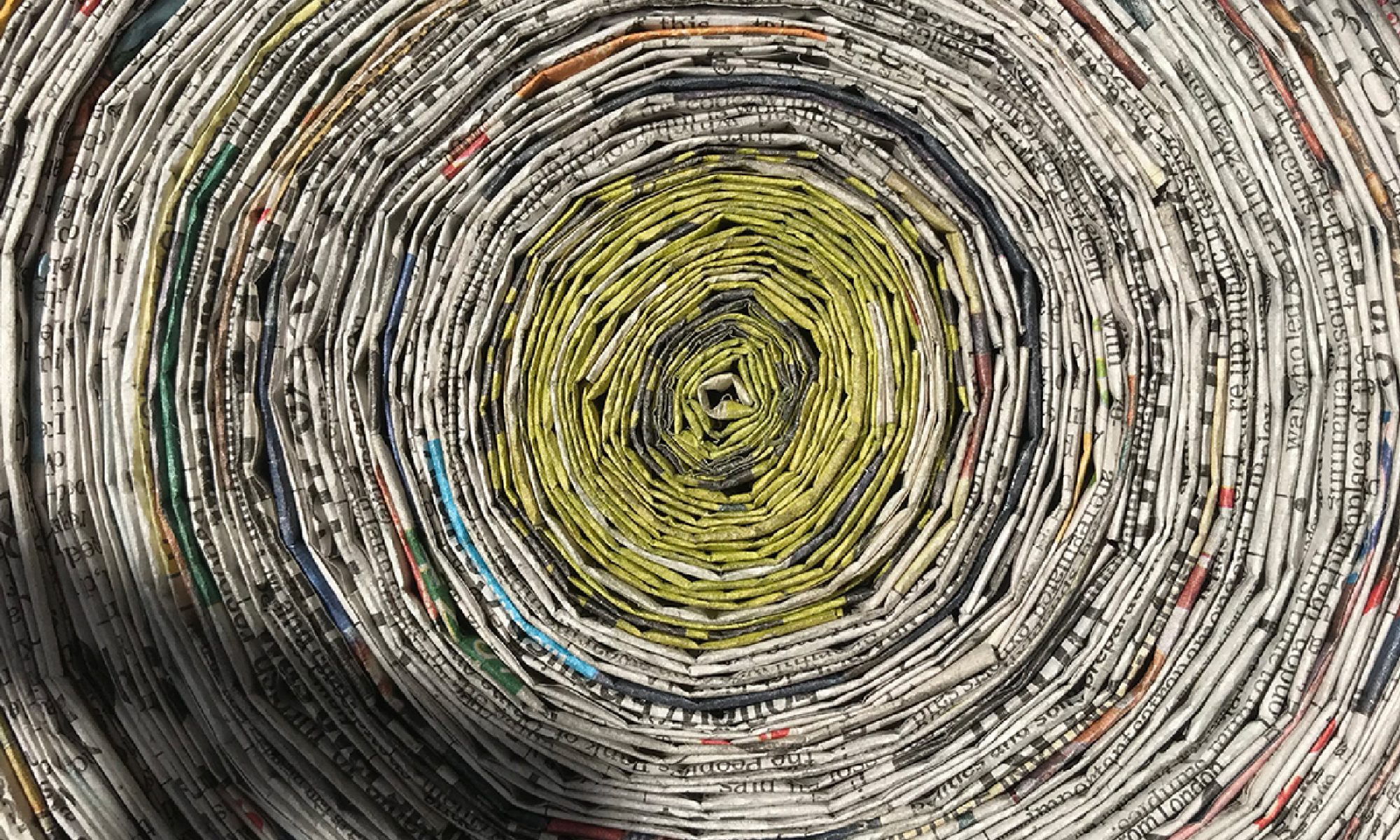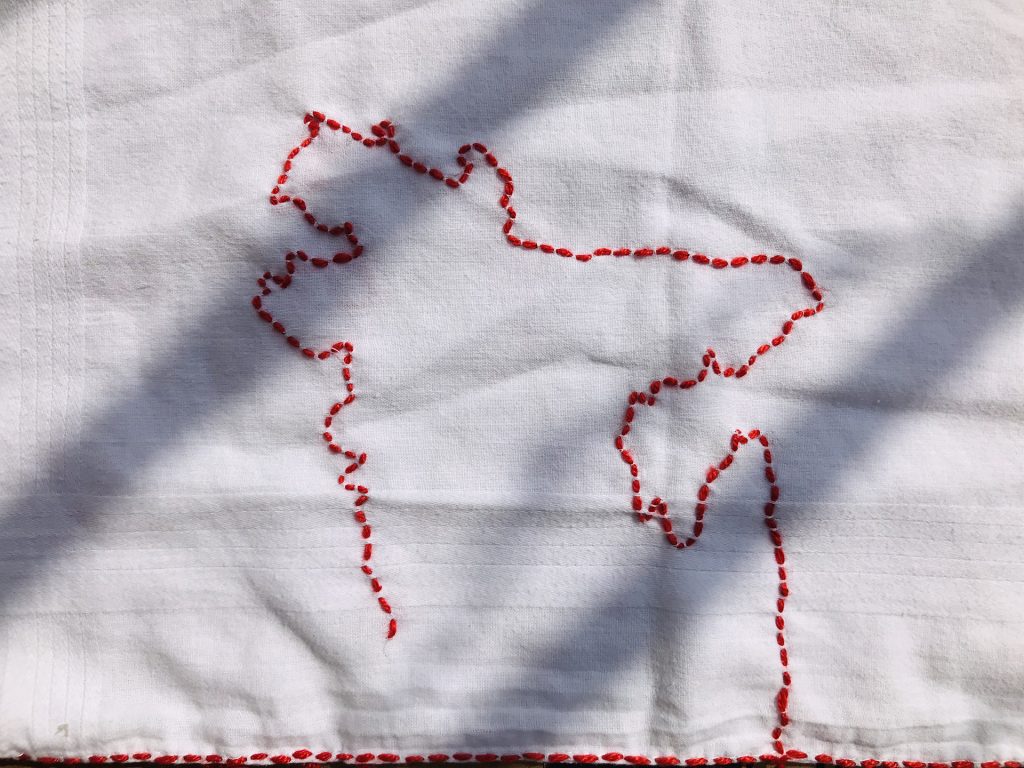“… AM I ONCE AGAIN REINFORCING COLONIAL PERSPECTIVES?”
I had a lot of conflicting feelings for this action. Pictured below is my earlier attempt at understanding my great grandparent’s journey from present day Bangladesh to present day India during the Partition era. To read more on it, go back two posts earlier.
To summarize my feelings about that action, I was really bothered by the fact that generation by generation, my great grandparent’s stories were fading away as there no records of them except by memory. I was attempting to tell their story through Kantha, a method of embroidery that uses recycled fabrics. What struck me about Kantha was that the stitching could be handed down through generations, with grandmother,mother and daughter working on the same Kantha which I felt was appropriate for such a generational journey of memories of my great grandparents. Though I attempted it, I couldn’t help feel that I was erasing their story by stitching the very border they escaped from.
At the beginning of this reflection, I mentioned conflicting feelings. This is the story of my grandparents’ journey and many others but do I have any right to tell these stories? This knowledge was not imparted to me, I only know because I asked. Maybe I shouldn’t be telling these stories at all but the people who were close to them; people like my aunts and my parents. Most of the people from the Partition generation aren’t alive but the knowledge of their stories has been passed down through generations as memory.
I decided to take a step back and let others tell this story but I provide tools. Kantha is the medium of storytelling that I believe was appropriate for these generational stories but how can Kantha be used by everyone to tell their ancestor’s stories? I decided to embroider a typeface in Kantha’s running stitch style. Pictured below is the base typeface that I created. I made the typeface so it would be easy to apply a running stitch. Angular. No curves.
To be honest, I am not completely satisfied with the typeface but I promised myself I won’t be so perfectionist about it as this is more about the making and less about results. This is where I had another bout of conflicting feelings. The written word is a colonial perspective. Kantha is a purely graphical form; based on patterns and images. By making a typeface out of Kantha, am I once again reinforcing colonial perspectives?
I think, at this point, I was trying to renconcile this fact. Huge internal debate ensued. Though the written word is a colonial perpsective of records, written literature makes up a big part of Bengali culture as a result of the Bengal Renaissance (19th century to early 20th century). I don’t think this debate was ever resolved so I just decided to go ahead with making the typeface.
I still have to embroider and name the typeface. That will probably continue on to action 10. I was also considering making the font in Bengali but decided against it for now as my brain would melt from the sheer amount of work I would have to do. All in all, despite all the conflicting feelings this action, it was fun making a typeface. I was back in my element with making through the screen which was something I avoided in my earlier actions. I am also interested to see how the digital typeface would translate into the embroidered typeface. This would also be a first for me; mixing craft with design. Let’s see how this goes. Till the next action.





ambbet สล็อตเเตกง่ายเว็บตรงไม่ผ่านเอเย่นต์ สล็อตออนไลน์ เกมเดิมพันทำเงิน บริการสล็อตออนไลน์ครบทุกค่าย สล็อตเเตกง่าย เเตกหนักที่สุด มีเกมให้เลือกเล่นมากกว่า 300 เกม สล็อตทำเงิน สล็อตวอเลท ไม่มีขั้นต่ำ ถอนไม่อั้น ถอนฟรี AUTO 24 ชั่วโมง.